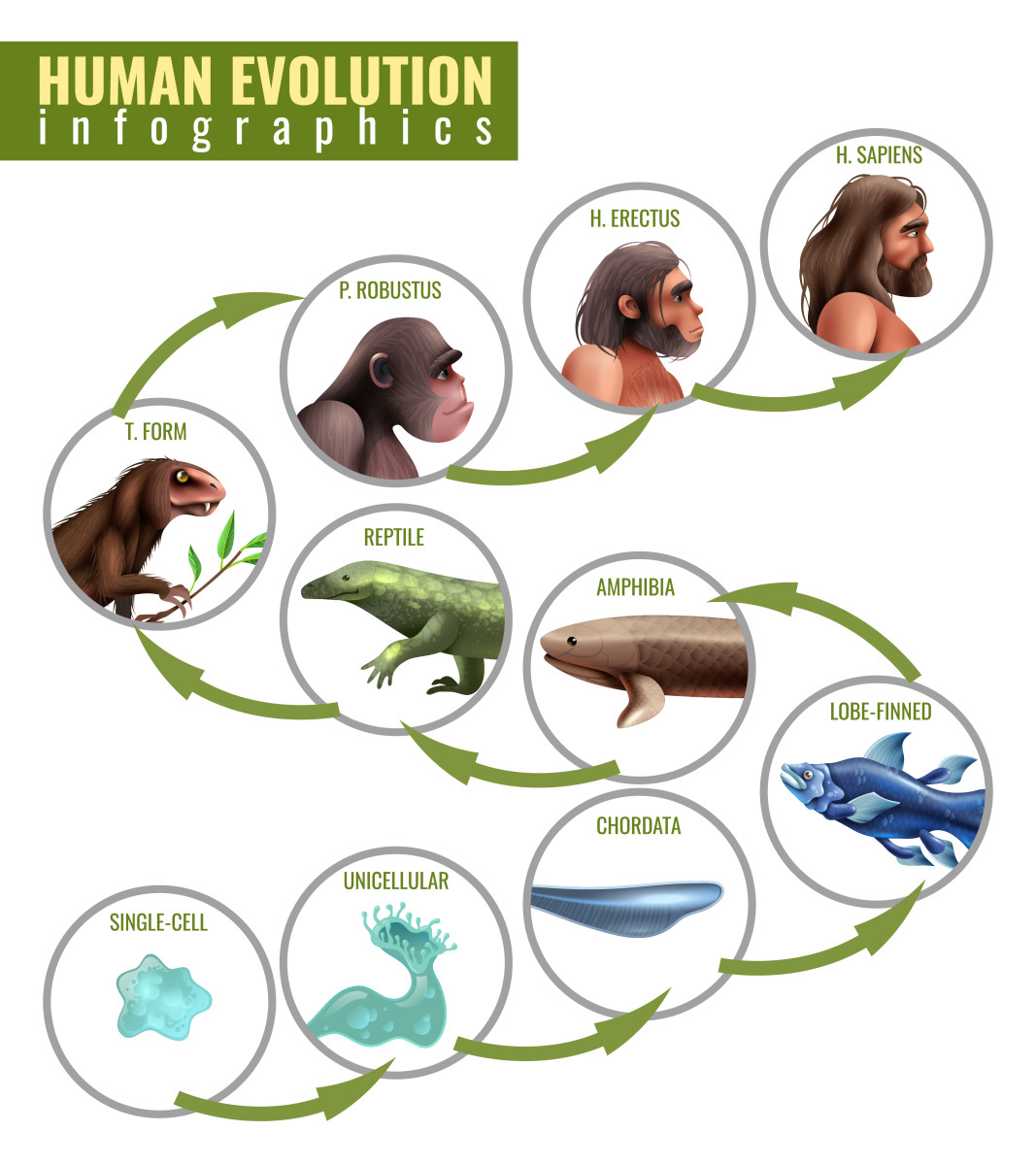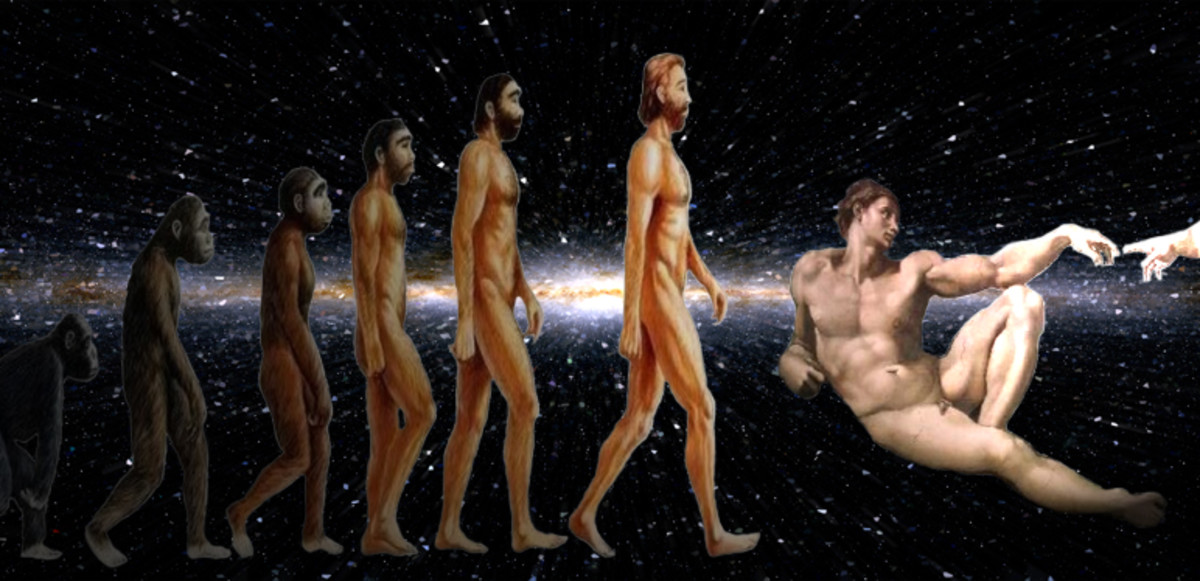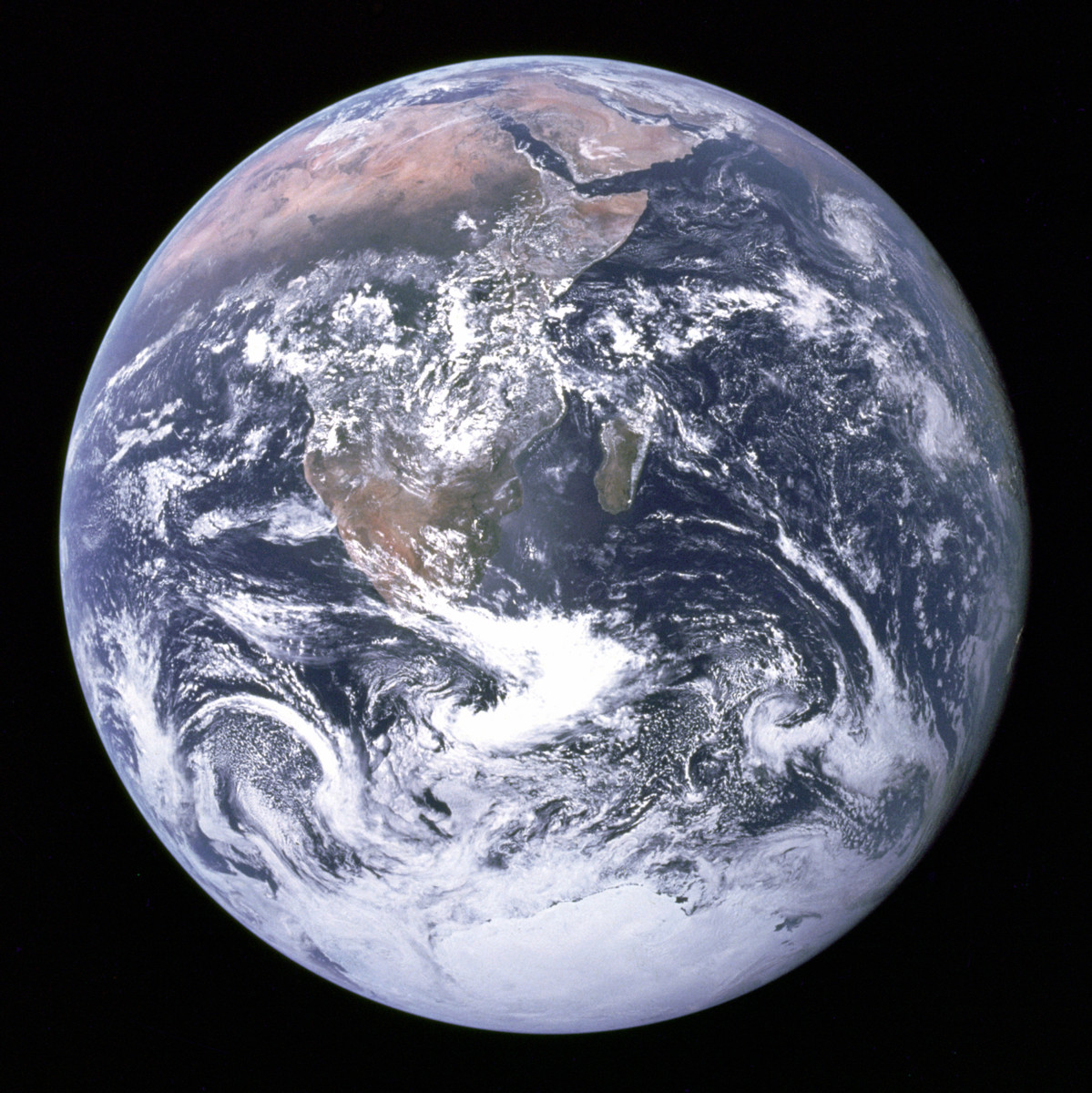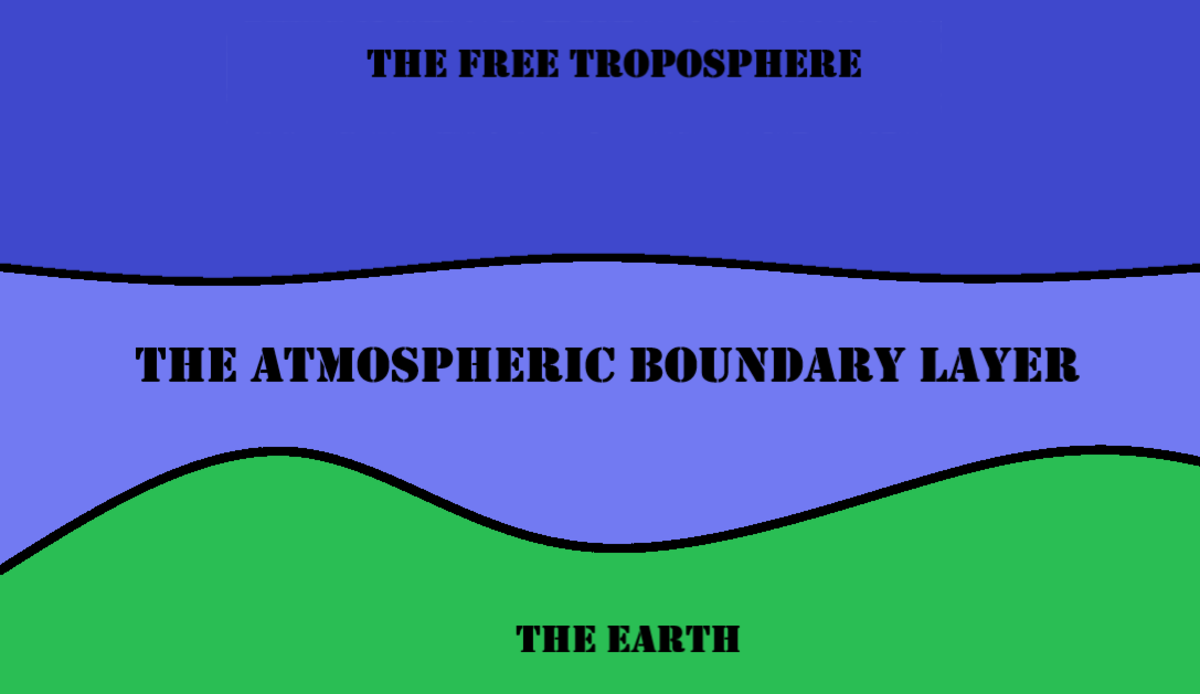9 Most Interesting Ways Your Planet Earth Is Slowly Changing

#1: Mass of the Earth
Each day the Earth gains more weight than a college freshman. It isn't from building cars, roads, or making babies...those were all created from materials already here. It's from all sorts of space debris that hits the atmosphere and usually burns up. Scientists are starting to realize how many asteroids (including big ones) there are that miss us only by a few minutes... it starts to become a little scary.
The Earth actually gains about 40 million kg a year. That's actually pretty sizable. According to the weights I found online, that's about 8 Eiffel Towers. Of course the weight of the Earth is 5.97 x 1024 kg, so there isn't a reason to raise alarm.
If you calculate how much weight the planet has gained over its entire 4.54 billion year lifespan, it has only gained about 1.81 x 1017 kg (excluding major asteroid events). That's about a millionth of a percent of its weight from asteroids alone. If you ever find chunks of an asteroid, then keep it close-- handfuls of asteroid debris can often sell for couple of hundred of dollars.

#2: The Big Dipper
Everyone who has looked up at the night sky knows that the stars seem pretty fixed. If you live in a densely populated city and you can't see the stars then just take my word for it. You might've heard of a "shooting star," but that is actually just a small object pretending to be a star.
The actual stars aren't fixed though. There are two major factors that make the stars of our ancestors different than the stars of today.
For one, the Earth has a long term wobble. It is known as the Chandler Wobble, and it's really hard to measure. To measure it, you have to be able to detect movement of a few meters over the course of a year relative to a fixed point (scientists find a way to do it though somehow). In 2001 it was discovered that it correlated strongly with ocean bottom pressure. Anyway, the effect is prevalent enough that the Egyptians saw a different North Star.
There is also a second way that dinosaurs (not the Egyptians as much in this case) saw much different constellations than us. It is important to remember that stars are moving at absurd speeds toward and away from each other at all times. Some stars, or what seem to be stars, are actually galaxies way off in the distance (millions and billions of light years away). Some of the brightest stars are only a few light years away...the closest being Alpha Centauri 4.37 ly away. Every single one of these celestial bodies is moving at incomprehensible speeds.
Below is Ohio State University's model of the Big Dipper over 200,000 years (keep in mind the dinosaurs lived 65 million years ago). Our great-great-great-etc. grandchildren might have to call it the "Big Kitchen Knife", although that isn't as catchy.

#3: Length of Day/Distance to Moon
Do you ever wish there were more hours in a day? You could probably have time to work out, do laundry, and take the kids to soccer practice if you had like three extra hours.
In the Future Our Days will be Longer
On the bright side you have more time to do the things that you want to do. Due to the tidal pull of the moon, the Earth's rotation is slowing down. The Moon is receding (about 4 cm/year) away from us for the same reason. This recession has been confirmed with the tandem force of lasers and Apollo missions.
On the negative side, it takes about 200 million years for the Earth gain an hour per day at its present rate. At that rate the Earth will have about 46 hours in a day when our galaxy collides with the Andromeda galaxy in 4.5 billion years.
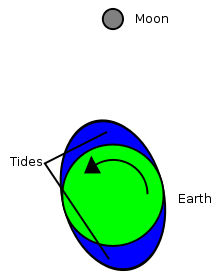
So next time you want to impress your friends you can tell them that dinosaurs had much closer to 23 hour days! In fact, biologists have confirmed in ancient pre-dinosaur coral that there was once 400 days in a year (which matches what physicists have predicted for that time period). Go interdisciplinary science.
Eventually the Earth would stop rotating relative to the Moon if the Earth/Sun/Moon system was kept in its current state. The Earth would become tidally locked to the Moon just like the Moon is tidally locked to us. Once we stop rotating relative to the moon, the 24 hour day will have extended to 45 (current Earth) days. This would take a few hundred billion years though... much much longer than the current age of the Universe and also the lifetime of our star.

Earthquakes can shorten the day
The following analysis is a summary of an argument made by Ethan Seigel, one of my favorite science bloggers.
Earthquakes are a pretty bizarre experience for an average person. 99.9999% (this is in no way an exact calculated figure) of our lives the Earth seems completely stable. So when it starts shaking around the movement of course would cause just about anyone to panic.
It isn't expected that something as big and heavy as the Earth should move. When something as big as the earth shakes around, quintillions of tons of dirt and rock are shifted. The denser material migrates to the bottom, and the lighter material stays on top. If you were to fill a jar with sands of various densities or even rocks, you could demonstrate the same process by shaking the jar. When this happens, the radial mass distribution of the Earth changes.
Much like a figure skater changing her spin rate by tucking in her arms, after an Earthquake the Earth has figuratively tucked in its arms a slight bit, resulting in a shorter day. The 2004 Sumatra quake, for example, shortened the day by 6.8 microseconds (the moon is slowing us down by about 14 microseconds per year by comparison).
#4: The Earth was a snowball for 200 million years
Often sciences classes will tell you that if the Earth was closer to the Sun it would be too hot for life as we know it, and if it were farther away it would be too cold. Luckily we are in a goldilocks zone that allows us to prosper.
While this is true, it isn't that simple. From 850 to 635 million years ago, during the well-named Cryogenian period, the Earth had periods with glaciers at the equator. The scientific debate over this isn't whether or not there was ice at the equator-- it's if the oceans of the Earth were completely frozen over or if there was still some water at the equator.
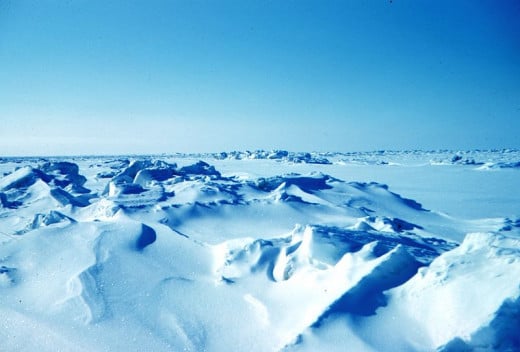
The scary part is that the Earth could still be like this (after all, it lasted 200 million years). We think that microorganisms saved the day. Recent findings by biogeochemists (yes, they exist) prove that there was a large spike in phosphorus levels in the oceans as a result of large rock deposits being pushed into the sea. Basically we think that all that ice had to push mountains and hills into the ocean, much like glaciers of smaller ice ages have been observed to do.
A recent theory suggests that microorganisms used this phosphorus in a photosynthesis process that also had oxygen as a by-product. The large volume of oxygen produced could have allowed complex life to form. This would also have helped the Earth thaw and ultimately allowed the Cambrian explosion that occurred 530 million years ago.
Sound like a bunch of bull? I can see that. The point is that for a large time period, even though we were in the same orbit around the Sun, the Earth was covered in ice (much like Europa).
Interesting fact to impress your nerdy friends that is sort of on topic: Much in the way cow farts release methane and contribute to global warming, it has been shown that it was likely that dinosaur farts warmed the earth to one of its hottest temperatures.
#5: Our Sun used to be much weaker
The Sun is an intriguing creature. It really frustrates me that we still don't conclusively know why the corona is hotter than the surface. Oh well.
Another mystery is how the heck our Earth has remained at such a constant temperature over the years. It is accepted among the scientific community that from 3.8 to 2.5 billion years ago the Sun was only 70-75% as bright. Losing 25% of the incoming sunlight is kind of a big deal. As you might guess, it almost translates to losing 25% of the Earth's heat.

Despite this anomaly, we are almost certain the Earth maintained its temperature over time. The most obvious explanation is greenhouse gases, but this cannot be extensively supported with data.
The Sun also varies in output over short time periods. The most it has varied over the last 2000 years or so is estimated to be about 0.1-0.2%. The traditional 11-year cycle is shown below.
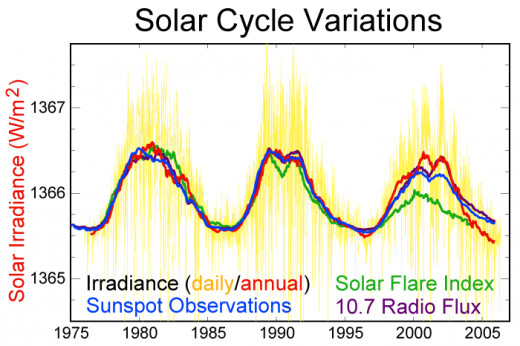
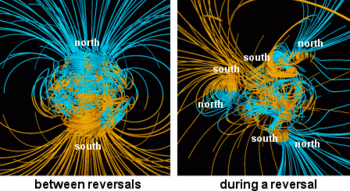
#6: Our Magnetic Field can FLIP
I would like to start out by pointing out that our magnetic field is very important. It protects us from high energy particles that were thought to be responsible for the dissipation of the atmosphere of Mars.
With that being said, our magnetic field strength has decreased about 10-15% over the last 150 years. While this sounds very dramatic, and in a way it is, this is normal. In fact, our magnetic field is incredibly dynamic. About 780,000 years ago the entire thing flipped so that the "south" magnetic pole moved from the geographic north pole to the south pole (where it is today). It is thought that this process weakened the strength of the field to 5% of the present value.
Geomagnetic reversals were more common in the past, and might be more common in the future. They seem very independent of human activity because of the sheer scale of the amounts of metal in the Earth that cause fluctuations.
Should you lose sleep over this? Not really. There isn't great evidence for extinctions occurring due to the reversals. Earth might lose a little more atmosphere than usual, but not on a scale that would threaten life.
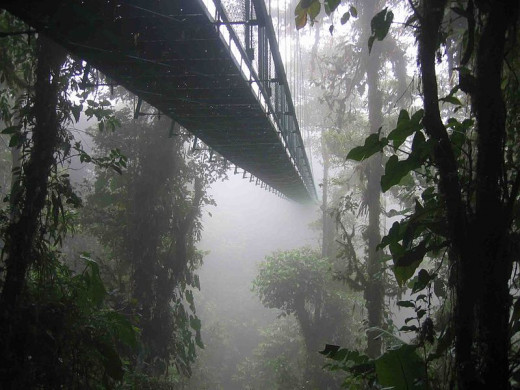
#7: Sahara Desert (recently)
From about 10,500 years ago to 7,300 years ago (while modern humans walked the Earth) the Sahara desert was a dense rainforest because of a receding ice age. If you stop and think about it, it kind of makes sense that the Sahara should be tropical. The Sahara is, after all, close to the same latitude of many of the world's rain forests. Fossil evidence shows that during that 3,000 year span, humanity stretched across the wet forests of North Africa, as did crocodiles, elephants, and rhinos. Before and after this period, the Sahara was much like it is today. It is interesting to note that predynastic Egyptian society (and possibly the origins of many of today's societies) started about the time that humans were forced to move back to the Nile. This lush period between two periods of harsh desert was the direct result of an Ice Age.
I know that I've really only used Egyptians and dinosaurs as historical time reference points, and I'm sorry. It is important to realize however that the Sahara desert/Sahara rainforest has had a very diverse climate for the last few hundred thousand years, and even more diverse climate when the dinosaurs were around (also a time when the continents were arranged much differently than today).
100 million years ago, the Sahara housed a one of the widest rivers on Earth known as "the river of giants." Boy, it would be beautiful if we could glimpse at this river today (without being eaten). There were giant fish that were armored with thick scales, giant crocodiles the length of a couple of buses, giant flying reptiles among the largest in history, giant snakes, and giant sauropods too. I bet there were cool small animals too, but we haven't pieced together the whole food chain...
But now, today, the Sahara is only a harsh desert. Luckily science has given us a partial story of it's history. Despite how harsh the climate is in Northern Africa, the Amazon rainforest relies on the Sahara's dust being swept up into the atmosphere and dumped in South America to re-fertilize the soil. So there's that.
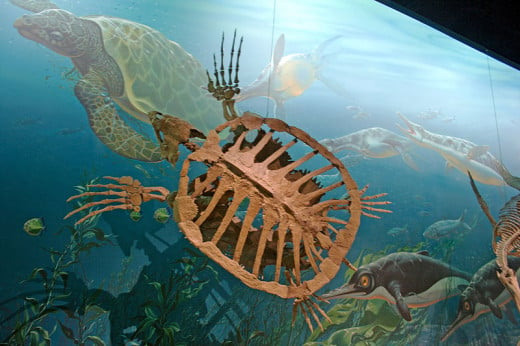
#8: 27 million years ago Colorado blew up the Earth
The Earth has a bad habit of exploding. Over the course of its history it has seen many super eruptions. One of the worst known eruptions (we are still discovering worse ones) happened in Colorado a few million years ago.
Here is a quick reference for the largest man-made explosions ever:

As you can see, the Tsar Bomba was a pretty big explosion. It was so big that the plane that dropped the bomb got a pretty dangerous exposure to radiation.
About 28 million years ago, before the Egyptians were born but after the dinosaurs had laid all their eggs, a few square miles of Colorado started to raise a few meters in the air. Geologic activity around this few square miles was probably similar to Yellowstone National Park is today--and had been for the past few million years. Anyway, for the next couple of hundred years this patch of ground raised a few km into the air to the point that it was almost like a weird mountain. The surrounding area probably fluttered with geological as well as biological activity.
Then one day, boom. An explosion 5000 times larger than the Tsar Bomba that threw up enough sediment to fill Lake Michigan (according to wikipedia). There is no question that this was a mass extinction event that completely mucked up the Earth's climate for around 100 years.
Yes, this is one of the biggest explosions in the last 100 million years. But no, it was not uncommon in Earth's history, and it will happen again in Earth's future. Modern humans haven't been around for long, but we know that it is really difficult (perhaps impossible) to stop supervolcanoes.
We can't easily stop them because even if you start relieving the pressure of volcanoes in one place, the mass of the earth is still there. If humans for example used Yellowstone as a large geothermal energy source for the next 1000 years, we would reduce the chances of the super eruption happening there. However, the Earth still has to release pressure due to its mass somehow, and so a more vigorous eruption would happen somewhere else.
No, I'm not a geologist, but this is an explanation that I read by a geologist. If I messed it up somehow, let me know. Also, if you're pretty up to date on science you know there probably were naturally occurring nuclear explosions--that article is coming soon.
#9: Plant-like organisms used to be purple
Ideally plants would be black. Black absorbs the most light which is then in turn used for photosynthesis. Why aren't plants black? Good question. In fact, many of the earliest organisms (known broadly as archaea) reflected both blue and red light (making them purple) but seemed to have been outperformed later by bacteria that reflected green. I leave you with a minuteearth video that describes this 100x better and also inspired me to add this to the list.
Warning: don't watch this if you like science too much. Minuteearth and minutephysics videos are incredibly addicting, and a couple minute video can turn quickly into a two hour ride down youtube lane.
I leave you with this quote...
"It is time to expand our minds"
--my ex-roommate, walking into class still drunk one day


